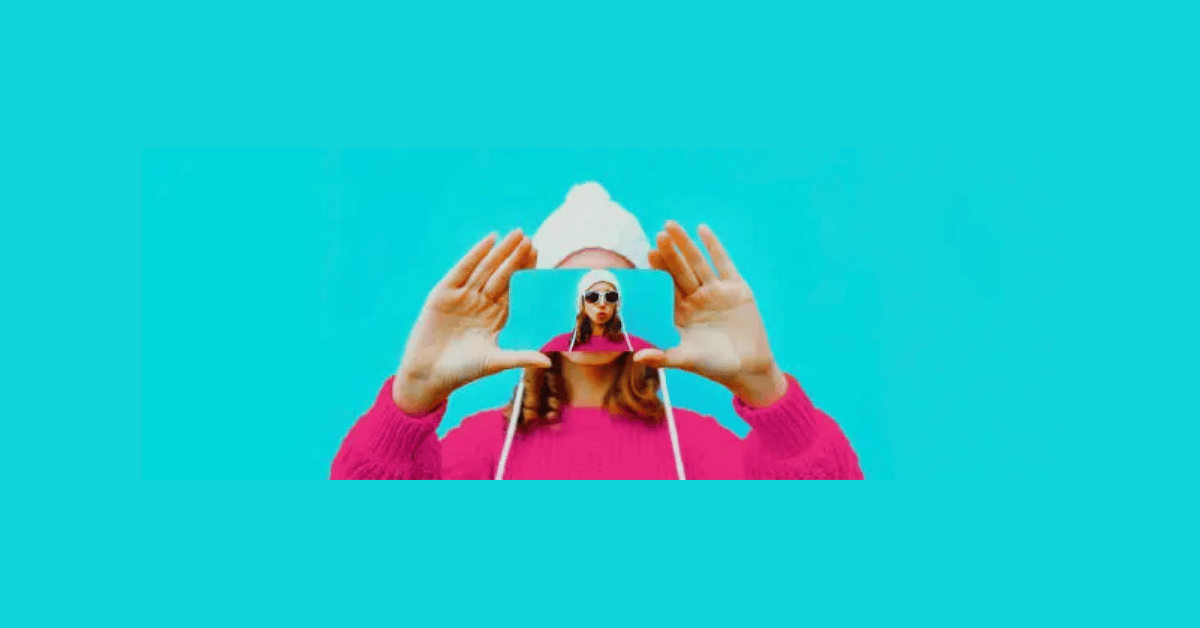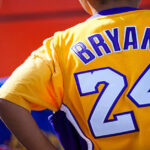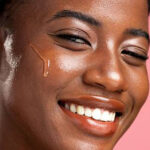In the increasingly visual and self-curated world of digital media, one cultural phenomenon has infiltrated every corner of marketing and brand communication: the selfie. Once dismissed as a frivolous or narcissistic act, the selfie has evolved into a powerful advertising tool. From luxury fashion campaigns to grassroots social media promotions, the selfie en publicité—or selfie in advertising—has reshaped how brands speak, how consumers respond, and how identities are both created and commodified.
This shift is not just aesthetic. It marks a fundamental transformation in advertising philosophy: away from polished authority, toward intimate authenticity. In this article, we explore the rise of the selfie in advertising through cultural, psychological, technological, and strategic lenses, unpacking its current uses, future implications, and the ethical lines it dances on – selfie en publicité.
The Origins of the Selfie: A Brief Cultural Snapshot
The word “selfie” was officially added to the Oxford English Dictionary in 2013, but the act predates smartphones. Self-portraiture has been part of visual art since the Renaissance. What changed in the digital age is scale, accessibility, and intention.
The selfie today is no longer a rare expression of vanity. It’s a routine act—a visual diary, a branding tool, a status symbol. And as consumers increasingly adopted the selfie as a daily ritual, brands began to see its utility.
Advertising, long accustomed to telling stories to consumers, suddenly saw the power in letting consumers tell stories for them – selfie en publicité.
From User to Influencer: How the Selfie Democratized Promotion
The shift from celebrity endorsements to influencer partnerships paralleled the rise of the selfie. Early advertising leaned on glossy, highly curated visuals created by professionals. But as platforms like Instagram and Snapchat grew, ordinary users began amassing audiences. Their selfies—casual, unfiltered, and relatable—garnered more trust than polished ads.
Brands noticed.
Selfie-based campaigns began as experiments: athletic wear brands inviting users to post gym selfies, beauty companies asking for before-and-after shots. The results? Explosive engagement, free user-generated content, and an unprecedented level of emotional investment from consumers.
Soon, the selfie wasn’t just part of the campaign—it was the campaign.
The Psychology Behind the Selfie in Advertising
The effectiveness of the selfie in publicité isn’t accidental; it’s deeply psychological. Here’s why it works:
1. Mirror Neurons and Empathy
Seeing a face—especially one that resembles our own—triggers mirror neurons in the brain, producing empathy and attention. A relatable selfie can outperform a studio-shot model because it feels more accessible and genuine.
2. Trust and Social Proof
Consumers trust peer recommendations more than brand messages. A selfie, especially from a real customer or micro-influencer, functions as social proof: “If it works for them, it might work for me.”
3. Ownership and Identity
When consumers post selfies with branded products, they don’t just promote the brand—they adopt it. This self-identification deepens loyalty far beyond traditional ad exposure.
Campaigns That Changed the Landscape
While hundreds of brands have experimented with selfie-based advertising, a few pivotal campaigns defined the potential of the format.
#ShareaCoke
Coca-Cola’s personalized bottle campaign asked customers to find bottles with their names, photograph themselves, and share the image. It generated millions of selfie posts across platforms and transformed a product into a personal experience.
Glossier’s Peer-Powered Marketing
Glossier built a billion-dollar valuation with almost no traditional ads. Its Instagram feed featured real users—often selfies—wearing its products. The result? A community-driven, selfie-fueled brand presence that felt intimate, not corporate.
Apple’s “Shot on iPhone” Campaign
While not strictly selfie-based, this campaign showcased real photos (many selfies) taken by users. It reframed product quality around user empowerment and authentic visuals rather than commercial polish.
The Technology Fueling the Trend
Several technological developments have made the selfie not just possible but powerful in advertising.
1. Smartphone Cameras
High-quality front-facing cameras have turned every user into a potential content creator. Night modes, portrait blurs, and AI filters give amateur photos near-professional quality.
2. Augmented Reality Filters
Brands now use AR filters on platforms like Instagram and TikTok to enhance selfie experiences. From virtual makeup try-ons to animated brand mascots, these filters encourage interaction and shareability.
3. Facial Recognition and AI
Advanced analytics can now detect emotional responses in selfies, allowing brands to measure campaign effectiveness or tailor content based on user expression.
The Selfie and Brand Identity: A Two-Way Mirror
For decades, advertising operated on the principle that the brand defined the image. The selfie has flipped that power dynamic. Now, users define the brand’s image through their own lenses.
Consumer as Co-Creator
Selfie-driven campaigns invite users into the branding process. This co-creation builds emotional ownership and enhances retention.
Aesthetic Crowdsourcing
By analyzing how consumers photograph themselves with products, brands can refine packaging, colors, and design based on real-life use—not just market research.
Ethics, Manipulation, and the “Authenticity Paradox”
As with any marketing tool, the selfie in publicité comes with risks and responsibilities.
1. Performance vs. Reality
Selfies often portray an idealized version of life. When brands encourage this, they risk promoting unrealistic standards, especially in beauty, wellness, and lifestyle sectors.
2. Informed Consent and UGC
User-generated selfies are often repurposed in marketing. Without clear consent protocols, this raises ethical questions about ownership and exploitation.
3. The Authenticity Illusion
Paradoxically, the more curated a “real” selfie becomes, the more it resembles traditional advertising. Consumers are growing increasingly savvy—and skeptical—of brands that push authenticity while tightly controlling narratives.
Selfies and Social Movements: When Promotion Meets Activism
Interestingly, selfie en publicité is not always commercial. Activist movements have leveraged selfie culture to spread awareness and create visual solidarity.
- #NoMakeupSelfie raised millions for cancer research by encouraging women to post natural photos.
- #BlackoutTuesday, though not selfie-based exclusively, showed how visual identity can serve as collective protest.
Brands attempting to align with these movements via selfies must tread carefully. Authentic allyship, not opportunism, is crucial.
Generational Shifts: Who’s Taking the Selfie, and Why It Matters
Gen Z: The Post-Selfie Generation?
While millennials popularized the selfie, Gen Z approaches it with irony and complexity. For them, authenticity is not just a buzzword but a core value. Ads that use selfies must now speak in memes, acknowledge social anxieties, and embrace imperfection.
Boomers and Unexpected Selfie Power
Interestingly, older demographics have also embraced selfie culture. Brands targeting boomers—especially in travel, healthcare, and lifestyle—are incorporating “silver selfies” as a fresh narrative of aging with vitality.
Future Trends: Where Is the Selfie in Advertising Headed?
1. Virtual Influencers
Characters like Lil Miquela blur the line between real and synthetic. These AI-generated avatars post selfies, endorse products, and amass followers—all without a human face.
2. Deepfake and Synthetic Media
Emerging tech allows brands to create hyper-realistic selfies of fictional characters or modify real ones. The ethical implications are vast, but the creative potential is undeniable.
3. Interactive Selfie Ads
Imagine billboard ads that change when you take a selfie in front of them or online platforms that generate personalized promotions based on your selfie mood. These technologies are in development and could redefine ad personalization.
Conclusion: The Selfie as a Mirror of Advertising’s Soul
In its simplest form, a selfie is a face in a frame. But in publicité, that face becomes a story, a brand ambassador, a cultural signal. The rise of the selfie en publicité signals more than just a trend—it represents a philosophical evolution in advertising: one that places human identity, self-expression, and mutual storytelling at the center of commerce.
It’s a tool that can connect or manipulate, empower or exploit. And like all tools, its value depends on the hands that wield it.
The question for brands in 2025 is no longer should we use selfies, but how can we do so with integrity, creativity, and care?
Because in the age of hyper-visual communication, the most powerful story may not be the one a brand tells—but the one a consumer captures in a single frame, holding a product, smiling naturally, and saying, without saying: “This is me.”
Read: S2Manga: A Closer Look at Online Manga Consumption, Access, and the Ethics of Digital Fandom
FAQs
1. Why are selfies increasingly used in advertising campaigns?
Selfies offer authenticity and relatability that traditional advertising often lacks. When real people share personal images using products, it builds trust and emotional connection, making brand messaging more effective—especially on social media platforms where personal storytelling resonates deeply.
2. How do brands benefit from user-generated selfie content?
Brands gain organic exposure, increased engagement, and valuable social proof when consumers share selfies. It reduces marketing costs, fosters community, and allows companies to observe how their products are perceived and integrated into everyday life, offering insights for future campaigns.
3. Are there ethical concerns with using selfies in advertising?
Yes. Ethical issues include obtaining proper consent for reposting user selfies, avoiding the promotion of unrealistic beauty standards, and ensuring transparency when influencers are compensated. Responsible use of selfie content requires clear guidelines and respect for digital privacy.
4. Can selfies be used effectively in industries beyond fashion and beauty?
Absolutely. Selfies have been successfully used in travel, fitness, food, tech, and even healthcare advertising. Their versatility lies in their ability to humanize any product or service, making it feel personally relevant and socially endorsed by real people.
5. What is the future of selfies in digital advertising?
The future includes more interactive experiences like AR filters, AI-generated influencers, and personalized content triggered by selfie data. However, success will depend on maintaining authenticity and consumer trust in an increasingly savvy and privacy-conscious digital landscape.











